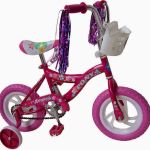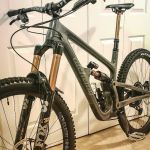
- understanding-bike-saddle-comfort-factors
- how-body-type-and-cycling-style-affect-your-choice
- types-of-bike-saddles-and-their-purpose
- real-cyclist-stories-and-mistakes-to-avoid
- where-to-find-your-perfect-bike-saddle
1. Understanding Bike Saddle Comfort Factors
Choosing the right bike saddle for comfort is not just about padding or brand—it's about fit, purpose, and balance. The wrong saddle can turn even a short ride into a miserable experience, while the right one can make hours in the saddle feel effortless.
Comfort depends on factors like sit bone width, saddle material, and how your weight is distributed. The idea is to support your skeletal system rather than your soft tissue, which is why a cushy saddle isn’t always a better one.
2. How Body Type and Cycling Style Affect Your Choice
2.1 Sit Bone Width Matters
Every cyclist’s anatomy is unique. Men and women often have different sit bone widths, which directly impacts saddle shape selection. Getting measured at a local bike shop or using a sit bone measurement tool can save you months of trial and error.
2.2 Position on the Bike
Are you riding upright on a cruiser, leaning forward on a road bike, or somewhere in between on a hybrid? Your riding posture determines the pressure zones and how the saddle interacts with your body. Road cyclists may need narrow, firm saddles while commuters can benefit from wider, supportive designs.
2.3 Riding Frequency and Duration
If you only cycle occasionally, you may lean toward comfort-focused gel saddles. But for daily cyclists or those doing long-distance rides, structured saddles with strategic cutouts help prevent numbness and long-term discomfort.
3. Types of Bike Saddles and Their Purpose
3.1 Performance Saddles
Typically narrower with firm padding, performance saddles are designed for road racers and mountain bikers who prioritize efficiency and reduced friction. These saddles are lightweight and often feature central relief channels.
3.2 Comfort Saddles
Wider and more padded, comfort saddles are ideal for casual riders. These often include gel inserts or springs underneath and work best on upright bikes where weight is more centered over the saddle.
3.3 Cutout Saddles
These are built with a central groove or hole to relieve pressure on sensitive areas, particularly useful for riders with previous saddle discomfort or numbness issues. Both men and women can benefit, especially on longer rides.
4. Real Cyclist Stories and Mistakes to Avoid
4.1 Anna's Touring Disaster
Anna, a London-based commuter, once rode a 50-mile charity event with her standard stock saddle. “By mile 10, I was shifting constantly, and by mile 25, I could barely sit down.” She later discovered her sit bones were wider than average and switched to a broader saddle with cutout relief—problem solved.
4.2 Joe’s Expensive Guess
Joe, an amateur triathlete, bought a high-end saddle based on popularity, not fit. “It cost me $200 and sat in my garage after two rides.” A later bike fitting revealed he needed a completely different shape. Comfort truly beats hype when it comes to saddles.
5. Where to Find Your Perfect Bike Saddle
When comfort is your goal, it’s worth exploring expert-reviewed options. Cycling Guider provides in-depth resources, reviews, and recommendations to help you choose the right bike saddle for your needs. Whether you’re after performance or daily ride relief, they help match riders with saddles that fit both anatomy and activity.
Many riders don’t realize how much their comfort depends on saddle choice until they switch. If your current saddle leaves you numb, sore, or constantly shifting, it may be time to rethink what you’re sitting on. A better fit can transform your entire cycling experience.







 Billet BMX5.0 (2 reviews)
Billet BMX5.0 (2 reviews) Far East Children Bicycle Factory1.0 (1 reviews)
Far East Children Bicycle Factory1.0 (1 reviews) Archer Motorsports, Inc.4.0 (8 reviews)
Archer Motorsports, Inc.4.0 (8 reviews) YEP Bike Works4.0 (55 reviews)
YEP Bike Works4.0 (55 reviews) Gorham Bike & Ski4.0 (498 reviews)
Gorham Bike & Ski4.0 (498 reviews) Alchemy Bikes4.0 (37 reviews)
Alchemy Bikes4.0 (37 reviews) How to Teach Kids to Ride a Bike: A Step-by-Step Guide for Parents
How to Teach Kids to Ride a Bike: A Step-by-Step Guide for Parents Tips for Riding on Busy City Streets: Smart Strategies for Urban Cyclists
Tips for Riding on Busy City Streets: Smart Strategies for Urban Cyclists Best US National Parks for Mountain Biking: Ride Epic Trails Across America
Best US National Parks for Mountain Biking: Ride Epic Trails Across America Best Aero Helmets for Time Trials and Racing
Best Aero Helmets for Time Trials and Racing How to Clean and Lubricate Your Bike Chain Like a Pro
How to Clean and Lubricate Your Bike Chain Like a Pro 10 Must-Have Items for Long-Distance Cycling Trips
10 Must-Have Items for Long-Distance Cycling Trips